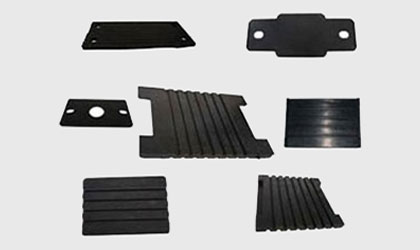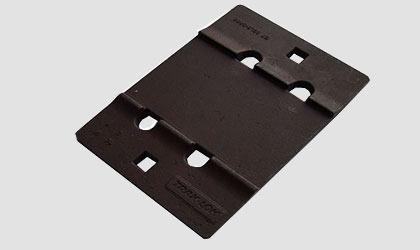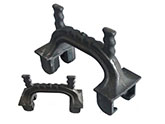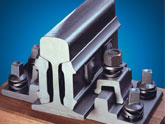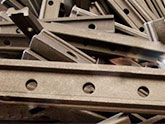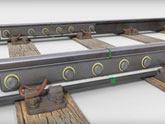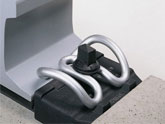The Development of Rail Track
The technology of rail tracks developed over a long period, starting with primitive timber rails in mines in the 17th century.Early rails were used on horse drawn wagon ways, originally with wooden rails, but from the 1760s using strap-iron rails, which consisted of thin strips of cast iron fixed onto wooden rails. These rails were too fragile to carry heavy loads, but because the initial construction cost was less, this method was sometimes used to quickly build an inexpensive rail line.
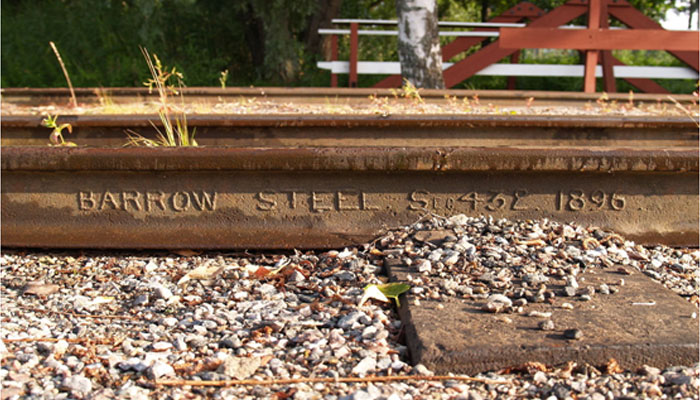
(Rail from 1896)
Modern track typically uses hot-rolled steel with a profile of an asymmetrical rounded I-beam. Unlike some other uses of iron and steel, railway rails are subject to very high stresses and have to be made of very high-quality steel alloy. It took many decades to improve the quality of the materials, including the change from iron to steel. The stronger the rails and the rest of the trackwork, the heavier and faster the trains the track can carry. The use of welded rather than jointed track began in around the 1940s and had become widespread by the 1960s.
Rail is graded by weight over a standard length. Heavier rail can support greater axle loads and higher train speeds without sustaining damage than lighter rail, but at a greater cost. In North America and the United Kingdom, rail is graded by its linear density in pounds per yard (usually shown as pound or lb), so 130-pound rail would weigh 130 lb/yd (64 kg/m). The usual range is 115 to 141 lb/yd (57 to 70 kg/m). North American railroads until the mid- to late-20th century used rails 39 ft (11.89 m) long so they could be carried in gondola cars (open wagons), often 40 ft (12.2 m) long; as gondola sizes increased, so did rail lengths. In Europe, rail is graded in kilograms per meter and the usual range is 40 to 60 kg/m (81 to 121 lb/yd).
In the course of more than 220 years of development, the rail track has derived a lot of types: Strap rail, Flanged rail, Baulk rail, Barlow rail, Flat bottomed rail, Flanged T rail, Vignoles Rail, Double-headed rail, Bullhead rail, Tangential turnouts, Grooved rail, Grooved rail, Girder guard rail, Block rail, LR55 rail.
Rail is graded by weight over a standard length. Heavier rail can support greater axle loads and higher train speeds without sustaining damage than lighter rail, but at a greater cost. In North America and the United Kingdom, rail is graded by its linear density in pounds per yard (usually shown as pound or lb), so 130-pound rail would weigh 130 lb/yd (64 kg/m). The usual range is 115 to 141 lb/yd (57 to 70 kg/m). North American railroads until the mid- to late-20th century used rails 39 ft (11.89 m) long so they could be carried in gondola cars (open wagons), often 40 ft (12.2 m) long; as gondola sizes increased, so did rail lengths. In Europe, rail is graded in kilograms per meter and the usual range is 40 to 60 kg/m (81 to 121 lb/yd).
In the course of more than 220 years of development, the rail track has derived a lot of types: Strap rail, Flanged rail, Baulk rail, Barlow rail, Flat bottomed rail, Flanged T rail, Vignoles Rail, Double-headed rail, Bullhead rail, Tangential turnouts, Grooved rail, Grooved rail, Girder guard rail, Block rail, LR55 rail.
Get In Touch
We receive enquiries in English, Español (Spanish), Русский язык (Russian), Français (French) and العربية (Arabic). Our professional team will reply to you within one business day. Please feel FREE to contact us!

